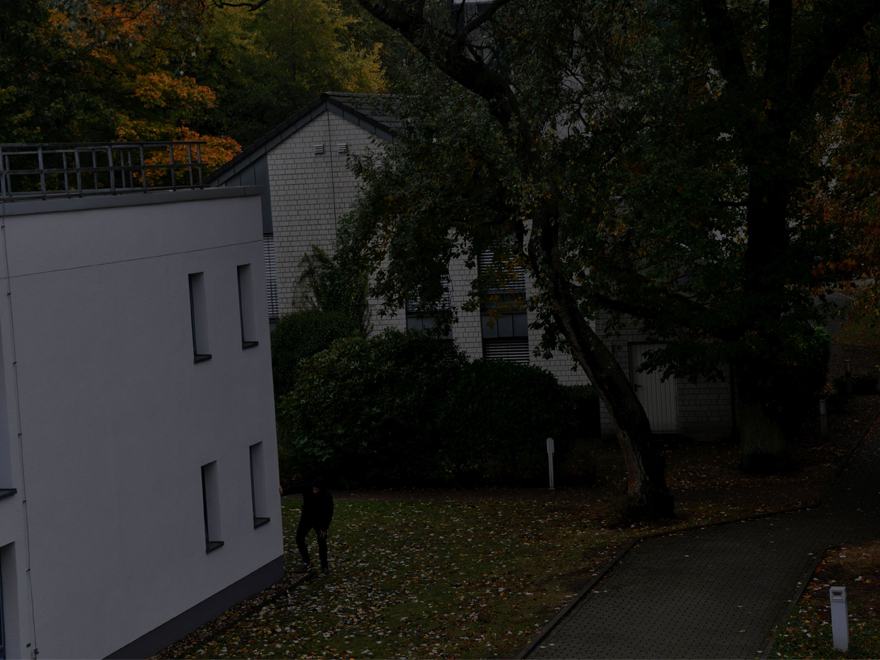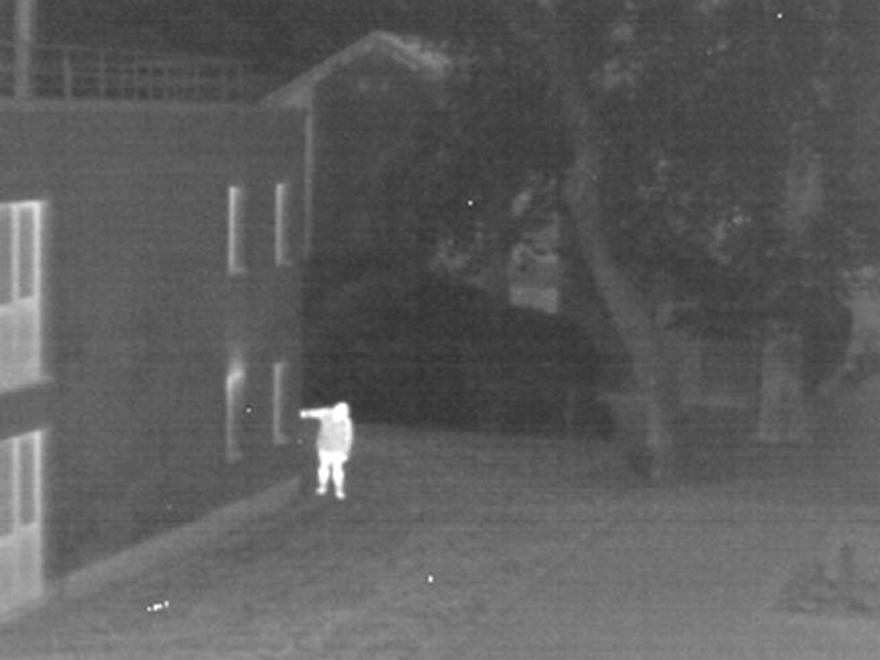The protection of infrastructure and objects by persons is very resource intensive. That is why there is the aspiration to a high automation degree in this area. Sensors that monitor fences and walls at property boundaries or windows and doors in buildings are cost-effective, but only provide information for object monitoring from a restricted range. Imaging thermography is the ideal technique for more extensive object monitoring, because it covers the entire area captured by FIR cameras. In comparison to video cameras, it allows for easy and reliable object surveillance, especially under difficult visibility conditions, such as darkness, fog, rain or snowfall. Authorized or unauthorized entry can be detected and determined in a targeted manner. Due to the temperature signature, people and animals are detected even over long distances without the need for additional lighting. The first image shows an object surveillance system without a passive FIR camera at night. In comparison, the intruder can be detected and identified in the left image taken with a passive FIR camera. Because no active artificial lighting is required, the object surveillance can run without disturbing the environment, which would be the case with artificial lighting. In addition, the monitoring is harder to detect from outside without artificial light.
The provided video data from the FIR camera allows for automatic processing of the video data with common video editing and evaluation algorithms. Apart from the object form, the temperature or temperature distribution can be used for classification as well. This way an automated and reliable detection and classification can be realized for object monitoring. In addition to the large range that is covered by the FIR camera, systems for object surveillance with automatic operation can be installed easily that also deliver an assessment of the situation. Through the compatibility of the video data with common algorithms for object detection there is even a combination of video and FIR cameras possible which makes use of the advantages of both systems. FIR cameras enable the installation of a surveillance system that can reduce the personnel costs significantly.

